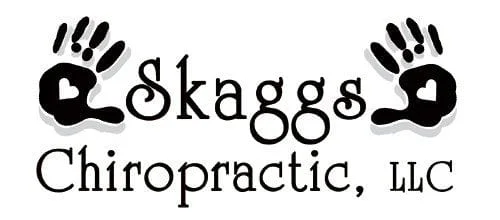When the 24 vertebra (the bones that protect the spinal cord) lose their normal position (subluxation), the delicate tissues surrounding the nerve becomes irritated, compressed or pinched. If an examination reveals subluxations of the spine, Chiropractic adjustments are recommended to help correct this condition. Adjustments are the only form of treatment that can correct this problem. Pain, muscle soreness and joint stiffness are just some of the symptoms caused by subluxations. Pain medications and muscle relaxers only cover up the symptoms and do nothing to correct the underlying problem, the subluxation.
Chiropractic adjustments are used to help restore the proper position of the vertebra restoring proper mobility, while relieving pain and stiffness. Dr. Skaggs uses his hands, applying a quick thrust or sometimes a low constant pressure to restore the proper position of these bones. Sometimes, the doctor uses an instrument to deliver a precise measurable force to the spine or uses a special adjusting table. Whatever the case, the adjustment given is usually gentle and painless.
In conjunction with adjustments, Dr. Skaggs uses other types of adjunctive therapy to strengthening the muscles of the spine or relieving muscle tension and pain. These may include moist heat, ice packs, trigger point therapy, ultrasound with low volt therapy, low level laser therapy or interferential therapy. Headaches, migraines, back pain, low back pain, neck pain may all be based on a vertebra being out of place.
Vertebral Subluxation
Our bodies are made up of billions of living cells that are organized into tissues, organs, and systems. They work together in a synchronized harmonious way to create a living being, the human body. The brain controls the synchronization and communicates to the body via the nervous system. A subluxation is a misalignment of one or more vertebrae of the spinal column, and can cause an alteration in the nerve functions and interferes with the transmission of nerve impulses resulting in a decreased signal from the brain to a cell, tissue, organs or a system. In simple terms, the inability of the innate to express its maximum health potential.
This complex may include all or any combination of the following possibilities:
- Osseous (bone) component: this is an abnormal motion and/or position of the spinal vertebra. The vertebra are either less mobile (hypo-mobile) than it should be, or too mobile (hyper-mobile). Vertebra that are hypo-mobile are often referred to as fixed or jammed. The vertebra that are hyper-mobile are often referred to as loose or unstable. Either way, there is an abnormal function and a decreased range of motion in the involved areas. It is the osseous component that applies pressure on the nerve roots as they egress the spine.
- Connective tissue component: muscles, ligaments, tendons, and/or fascia in the area of the adversely affected and their normal function is altered. The muscles may have spasms protecting the underlying structures or are too weak to perform normal movement of the human skeleton. Ligaments can be stretched to the point that a joint losses it's integrity and cannot preform the motion it is intended to.
- Disc component: the cushion between the vertebrae, called the disc, may be affected by abnormal position or motion of the vertebral. This can place abnormal stress on the disc causing them to rip and tear, bulge or herniate putting pressure on the nerves as they egress the spine.
- Neurological component: a subluxation can cause a compression or irritation of an associated nerve and/or cause interference with their normal function. In simple terms the nerve is short circuited or pinched.
- Altered bio mechanics: this is when a subluxation causes the joints in the spinal column not to preform at its normal capacity. This abnormal function can lead to the abnormal movement or the lack of movement, spinal curvature being decreased and abnormal curvatures of the spine to develop, resulting in an unbalanced condition of the spine. This can lead to further additional abnormal functions of the muscles, tendons, ligaments, systems, and/or organs. Altered bio mechanics is a precursor to degeneration of the spinal column.

